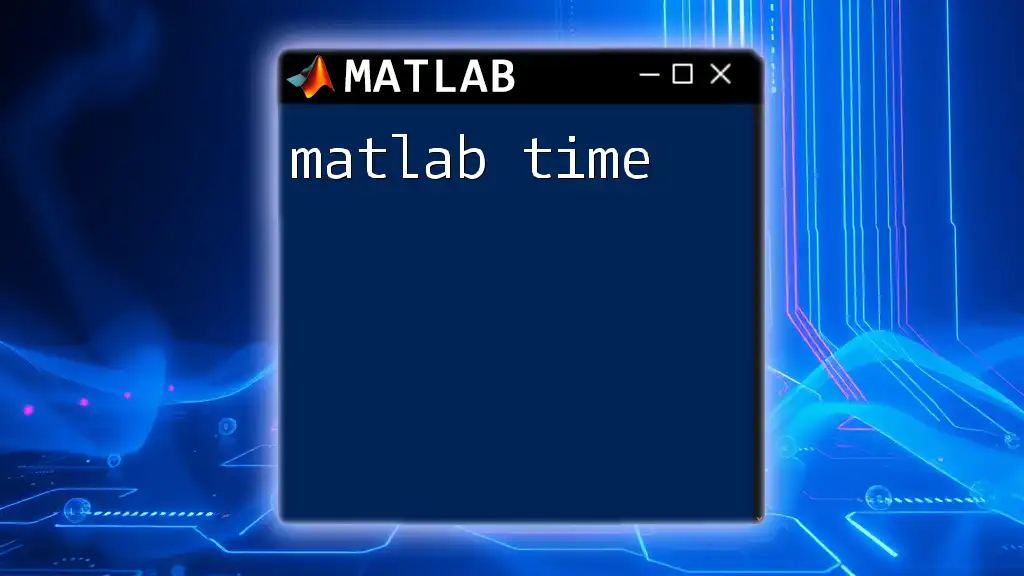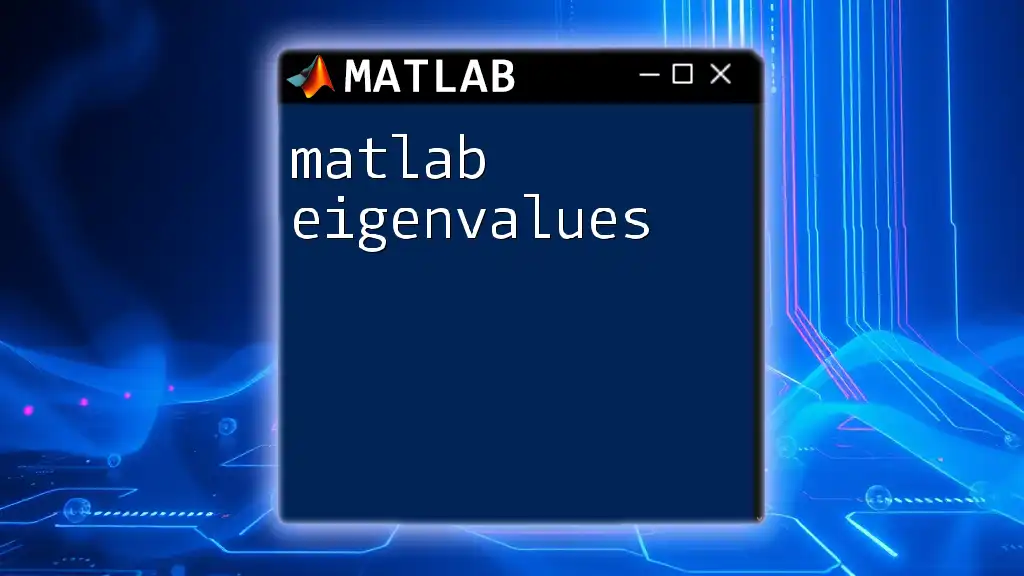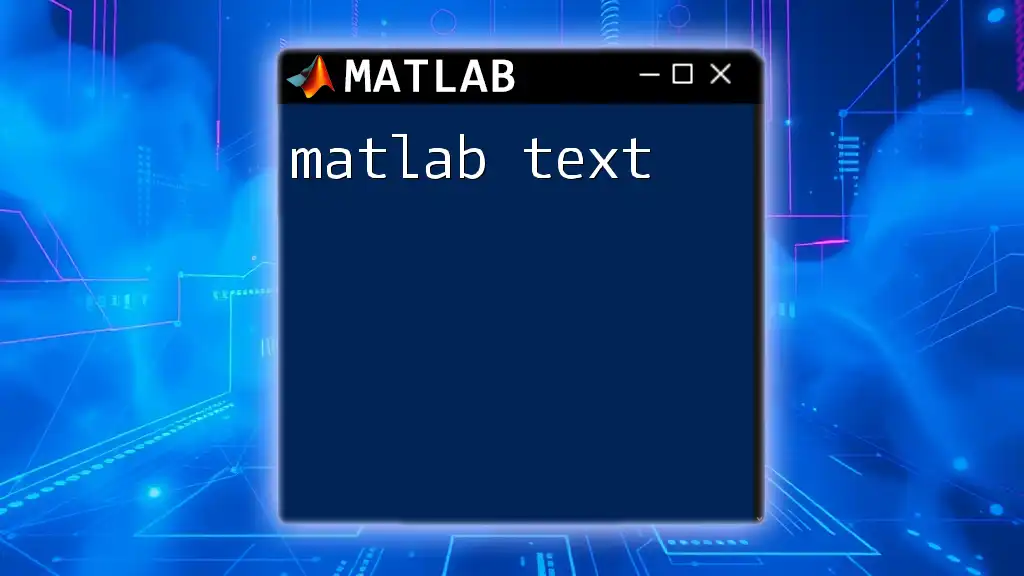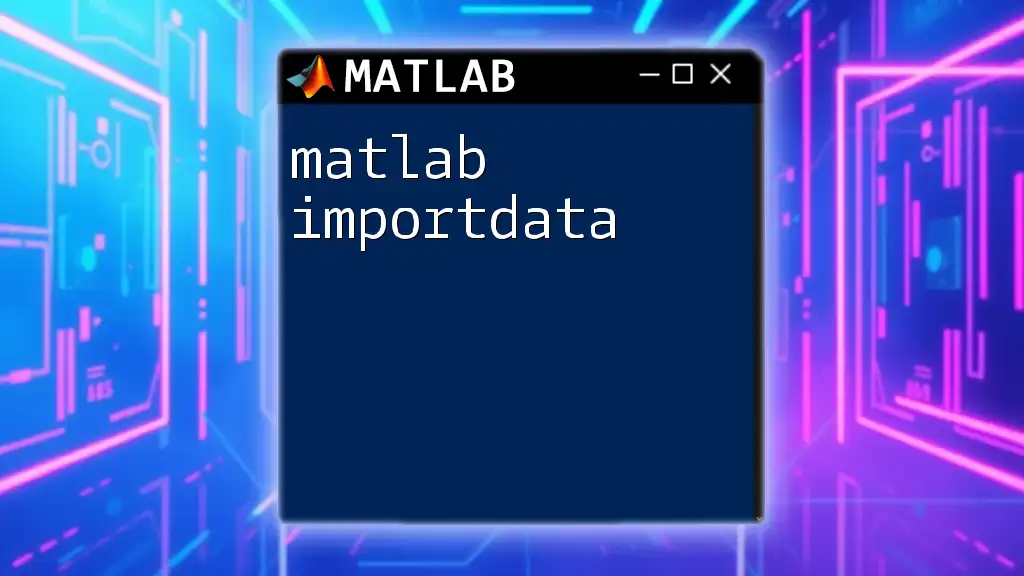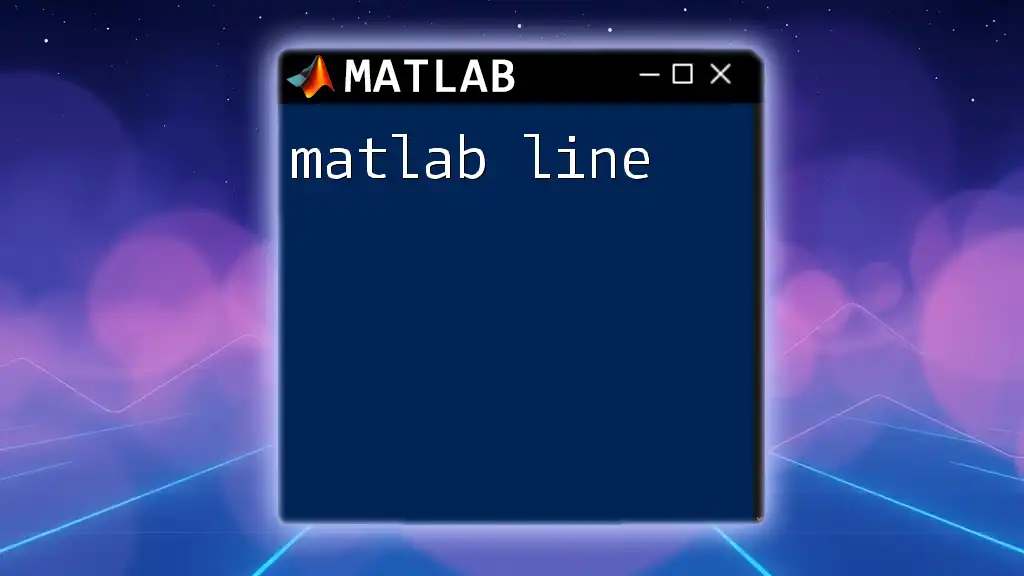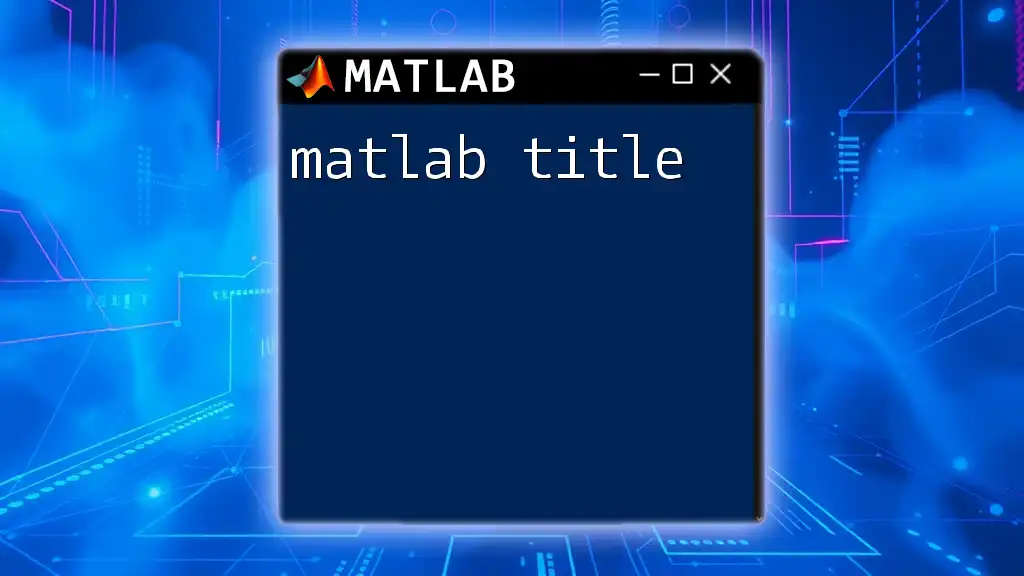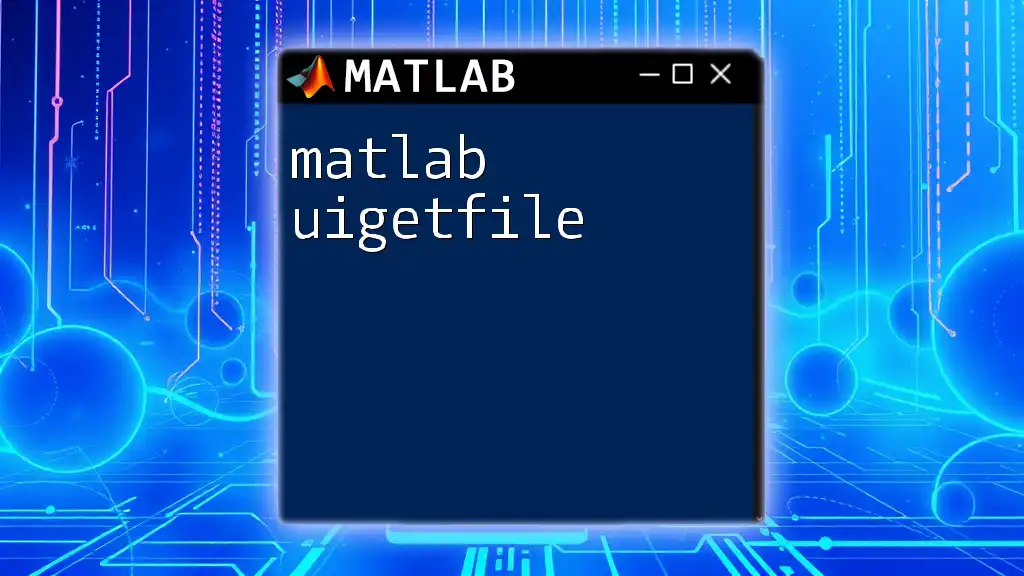"MATLAB time functions allow users to manipulate and analyze time-based data efficiently, enabling tasks like date calculations and time series analysis."
Here’s a simple code snippet to demonstrate how to get the current date and time in MATLAB:
currentDateTime = datetime('now')
Understanding Time in MATLAB
What is Time in MATLAB?
Time in programming refers to the representation and manipulation of temporal data, which is crucial in various fields such as data analysis, engineering, and scientific calculations. In MATLAB, understanding how to effectively work with time-related data can significantly enhance your data processing capabilities. Properly managing time allows for accurate tracking of events, timelines, and trends, making it an essential skill for any MATLAB user.
Types of Time Data
MATLAB provides several built-in formats for handling date and time data. The most common types include:
- Datetime Variables: These represent specific points in time and can include both date and time components.
- Duration Types: These represent the difference between two date-time values, allowing for various calculations and analyses involving time intervals.
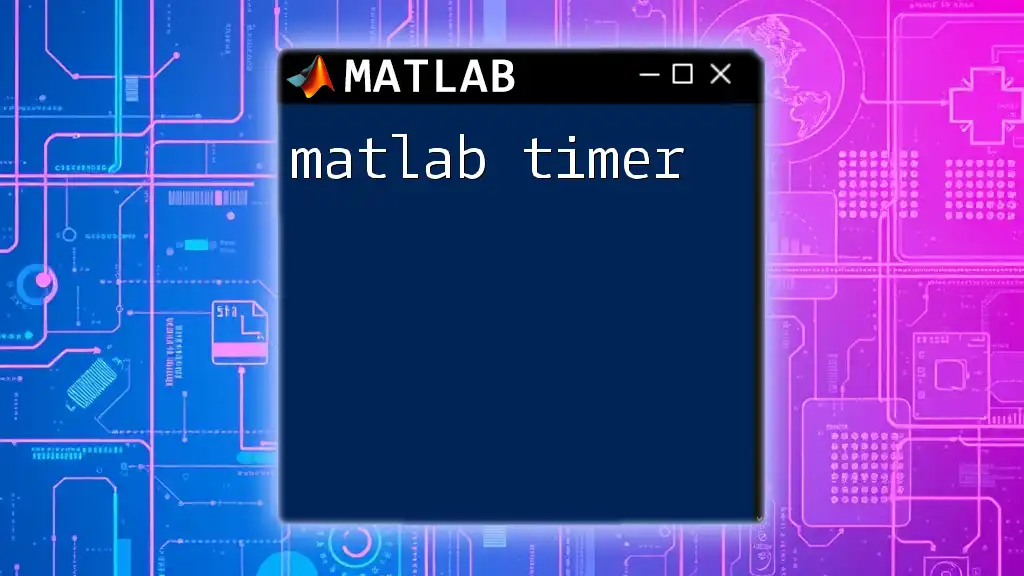
MATLAB Date and Time Functions
Creating Date and Time Variables
The cornerstone of working with time in MATLAB is the `datetime` function, which allows you to create date and time variables easily.
To create a specific date and time variable, you might use the following syntax:
dt = datetime('2023-10-01 13:45:00');
This command creates a `datetime` object representing October 1, 2023, at 1:45 PM. By mastering the `datetime` function, you will grasp one of the fundamental concepts in MATLAB time manipulation.
Accessing Date and Time Components
Once you have a `datetime` variable, you can access individual components such as year, month, day, hour, minute, and second. This is vital for tasks where you need specific parts of a date/time.
You can extract these components using functions such as `year`, `month`, and `day`:
yearValue = year(dt); % Returns 2023
monthValue = month(dt); % Returns 10
Using these functions allows for straightforward data analysis, particularly when filtering or aggregating data based on specific time components.
Formatting Date and Time
Formatting is crucial because it transforms raw time data into a more understandable format. The `datestr` function is specifically designed for this purpose.
You can format a `datetime` variable into a string representation with varying formats:
formattedDate = datestr(dt, 'dd-mmm-yyyy HH:MM:SS');
This command converts the `datetime` object into a readable string like "01-Oct-2023 13:45:00". Learning formatting options will help you present your data cleanly and professionally.
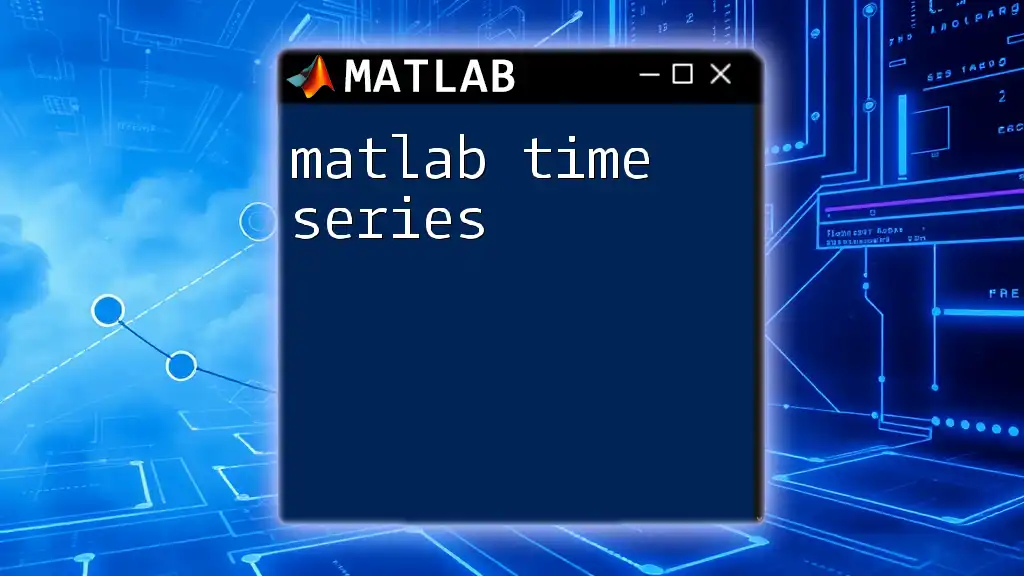
Manipulating Time Data
Performing Date Arithmetic
Date arithmetic lets you perform calculations and manipulations involving time, such as adding or subtracting days, months, or years.
For instance, to add 30 days to a `datetime` object, you can employ:
newDate = dt + days(30);
This ability to manipulate dates is incredibly powerful for applications such as scheduling and time series analysis.
Comparing Dates
To determine the relationship between date variables, MATLAB allows you to use relational operators. For example, if you want to check if one date is later than another:
isLater = dt > datetime('2023-09-01');
This will return a boolean value indicating whether `dt` occurs after September 1, 2023, enhancing the decision-making capabilities of your data analysis scripts.
Finding Differences Between Dates
To calculate the difference between two date-times, MATLAB provides the `between` function. This is particularly useful when you want to find out the duration in specific time units, like days, hours, etc.
For example, to find the duration in days between two `datetime` variables:
duration = between(datetime('2023-10-01'), dt, 'days');
This will yield a duration object indicating the time interval between the two dates.

Advanced MATLAB Time Features
Using Timetables for Time Series Data
Timetables are specialized data types for storing time-stamped data efficiently. They enable users to associate specific time points with data entries, making time series analysis intuitive.
To create a timetable, you can use:
t = timetable(dt', rand(5,1));
This creates a timetable `t` with random values corresponding to the dates in `dt`. Timetables offer varying functionalities for data manipulation and analysis that are optimized for time-indexed data.
Time Zones and `datetime`
Handling multiple time zones is essential for projects operating across different geographical regions. MATLAB supports this through the `TimeZone` property of `datetime` objects.
To assign a specific time zone, you can do the following:
dtWithTZ = datetime('2023-10-01 13:45:00', 'TimeZone', 'America/New_York');
By incorporating time zones, you can accurately manage and manipulate time data without confusion, ensuring more reliable data insights.
Visualizing Time Data
Visualization is an essential aspect of data analysis, especially for time series data. MATLAB’s extensive plotting functions can be effectively utilized to represent temporal trends visually.
You can plot time data stored in timetables with commands such as:
plot(t.Time, t.Var1);
title('Time Series Data');
xlabel('Time');
ylabel('Value');
This visual representation allows you to observe patterns over time, facilitating better understanding and communication of your results.
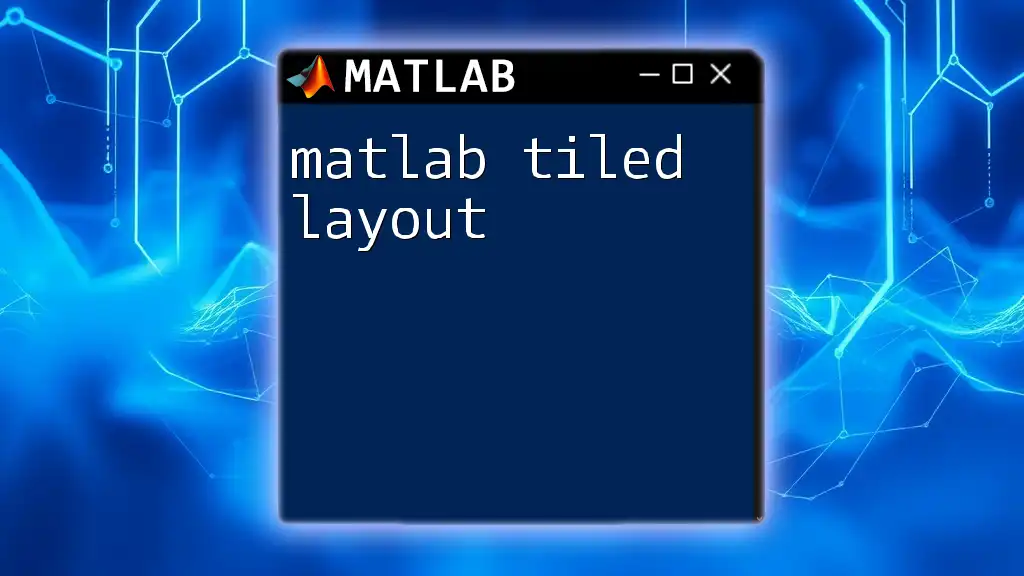
Real-World Applications and Use Cases
Time in Engineering and Science
In engineering simulations, time data is often critical for processes such as dynamic system analysis, performance testing, and real-time monitoring. Thousands of data points collected over time can provide insights into system behavior, enabling better design and analysis.
Scheduling and Time Management Applications
Time-related data management is fundamental in scheduling systems. Using MATLAB's time functions, you can create sophisticated applications to manage appointments, meetings, and event planning, ensuring optimal use of resources and time.
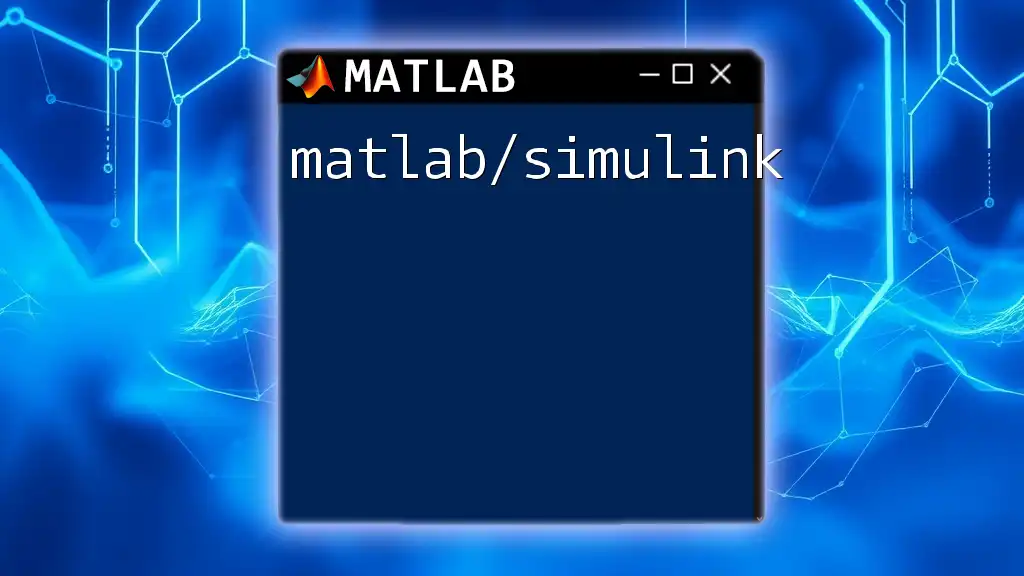
Best Practices for Time Management in MATLAB
Code Efficiency
To optimize your date and time manipulation operations, focus on vectorization rather than using loops. Vectorized operations in MATLAB can process multiple time data points more efficiently, improving execution speed.
Debugging Time-Related Code
When working with time data, common issues include misformatted dates or misunderstandings of time zones. Familiarize yourself with error messages and debugging techniques to identify and correct these problems swiftly.

Conclusion
Mastering time manipulation in MATLAB allows for precise data analysis and enhances the overall utility of your data processing capabilities. By effectively using the functions and techniques outlined in this article, you will equip yourself with the necessary skills to manipulate time-related data confidently.

Further Resources and References
For additional learning, consult the official MATLAB documentation, online tutorials, and other resources dedicated to advanced time manipulation techniques in MATLAB. These materials will further enrich your understanding and application of MATLAB time functions.

